What’s Trending in Aerospace – June 27, 2021
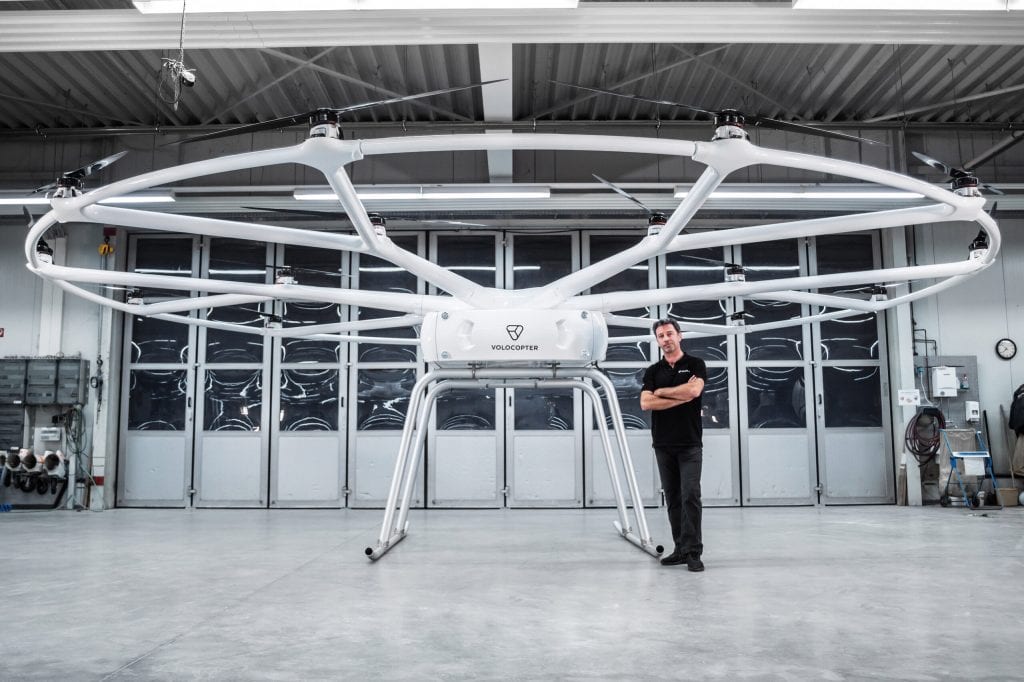
Check out the June 27 edition of What’s Trending in Aerospace, where editors and contributors for Avionics International bring you some of the latest headlines and updates happening across the global aerospace industry.
Commercial
Korean Air Deepens Involvement in Space Sector
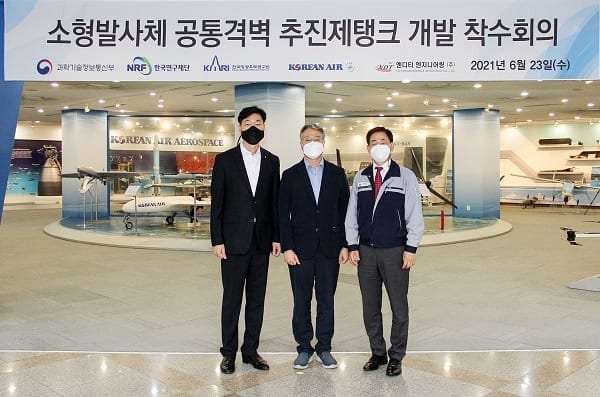
(Korean Air)
Korean Air, South Korea’s largest airline, is getting further involved in the space sector. The airline will develop common bulkhead propellant tanks for small satellite launch vehicles as part of the Ministry of Science and ICT’s ‘Space Pioneer’ project. Korean Air announced the collaboration in a June 24 press release.
The common bulkhead propellant tank will combine fuel and oxidizer tanks into a single tank using the latest metal welding and insulation technology. The airline said this new technology will increase the competitiveness of the small satellite launch vehicle market in Korea, as it will reduce the number of satellite launch vehicle parts, simplify structures, decrease vehicle weights by 30 percent, and cut down production costs.
Korean Air has been involved in space projects for almost a decade now. In 2012, Korean Air developed and assembled Korea’s first space launch vehicle, Naro (KSLV-1), and the company has core technology capabilities such as aircraft system integration and aircraft structure development.
“The small satellite launch vehicle market is expected to grow rapidly worldwide. SpaceX has already launched 1,000 400-kg satellites and plans to launch up to 12,000 more in the future. Global IT companies such as Amazon and Facebook are also planning to launch hundreds of small- and medium-sized satellites,” Korean Air said in the release. “On June 23, 20 engineers and officials from Korean Air, the Korea Aerospace Research Institute, and NDT Engineering & Aerospace gathered at the Korean Air R&D Center in Daejeon to discuss development plans, a future roadmap, and the scope of cooperation.”
Lufthansa Announces New A340 and A350 Plans From Munich
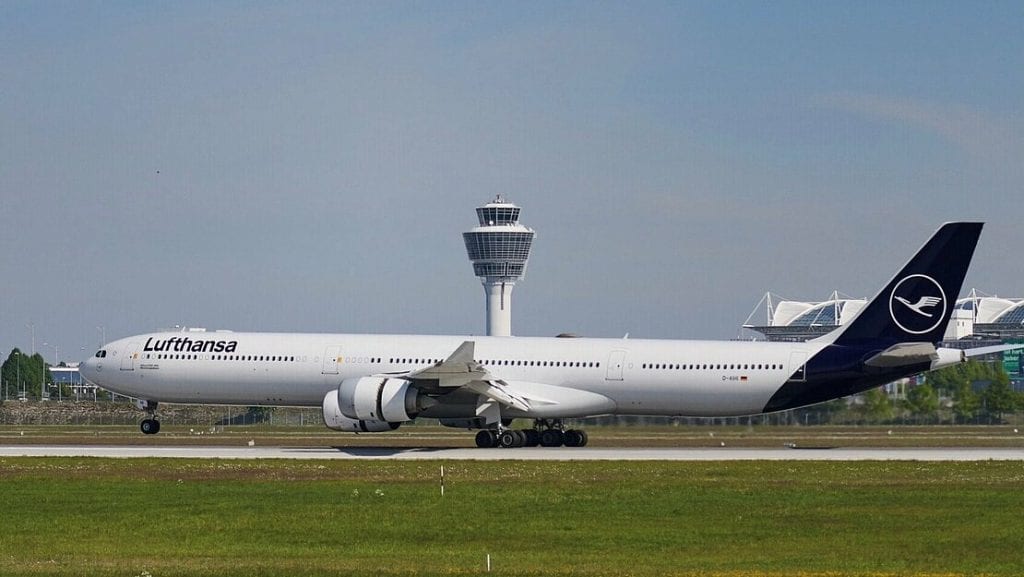
A Lufthansa A340-600 at Munich Airport. (Lufthansa)
As the global travel industry is returning to prior levels of activity, Lufthansa is strengthening its long-haul flying from Munich Airport and will again offer first class on selected routes. This means, Lufthansa is temporarily reactivating five Airbus A340-600 aircraft with four flight classes, according to a June 25 press release.
Commencing in summer 2022, the A340-600 will fly from Munich primarily to in North American and Asian destinations, according to Lufthansa. The decision to reactivate these aircraft is due to growing premium demand, for business as well as leisure travel.
“In late summer 2023, the first Airbus A350-900, offering First Class, will join the fleet and take off from Munich, bolstering the premium offering at Lufthansa’s 5-star hub,” Lufthansa said in the release.
Maintenance and Staffing Issues Force Hundreds of American Airlines Flight Cancellations
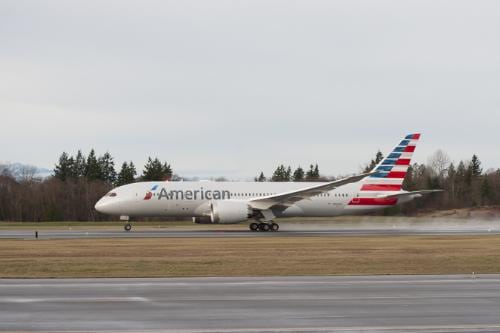
American Airlines canceled hundreds of flights last weekend due to staffing shortages, maintenance and other issues, according to a June 20 report published by CNBC.
“About 6% of the airline’s mainline schedule, or 190 flights, were canceled Sunday, according to flight tracking site FlightAware. The airline said that equaled about 3% of its total flights, including those operated by regional carriers. An internal company list, which was viewed by CNBC, showed about half of those were because of unavailable flight crews. On Saturday, about 4% of its mainline schedule, or 123 flights, were canceled and 106 on Monday, FlightAware showed,” according to CNBC.
Military
Bell Retires V-280 Valor From Flight Testing As Focus Shifts To FLRAA Program Of Record
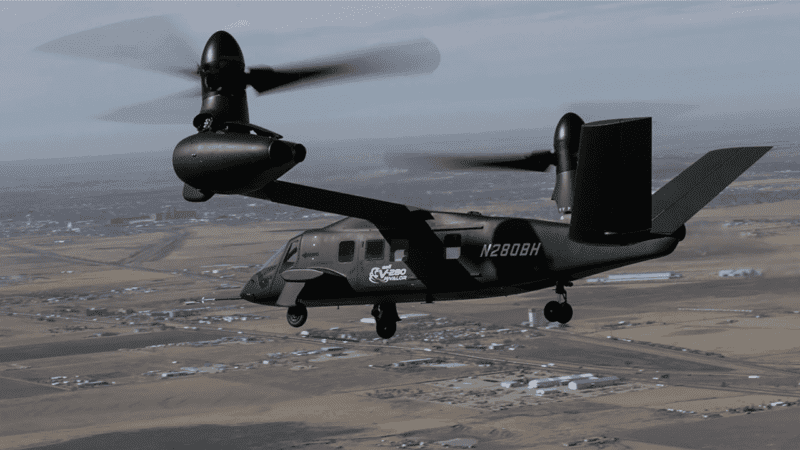
The Bell V-280 Valor. (Bell Flight)
Bell said Thursday it is retiring its V-280 Valor tiltrotor technology demonstrator from active flight testing, after reaching 214 flight hours and a max speed of 305 knots, as it readies for the Army’s official Future Long Range Assault Aircraft (FLRAA) program of record.
The announcement arrives as the Army is set to release its Request for Proposals for FLRAA production this summer, with a contract to be awarded in late fiscal year 2022 to either Bell or a Sikorsky-Boeing team offering the Defiant X platform.
“We have come a long way since we started our journey eight years ago. We made commitments, we safely executed our program on time, and we validated our performance claims and the accuracy of our digital models through flight demonstrations. Ultimately, the Army doesn’t send warfighters into battle riding in the back of digital models and so we thought it was important to bring that physical proof,” Ryan Ehinger, Bell’s FLRAA program director, said in a statement.
Both Bell and Sikorsky-Boeing are currently participating in the FLRAA’s Competitive Demonstration and Risk Reduction (CD&RR) Phase II effort for the Black Hawk replacement program to further refine their proposals, which will include completing both air vehicle and weapons systems preliminary design reviews.
State Department Approves $2.6 Billion In Philippines F-16 Weapons Sales
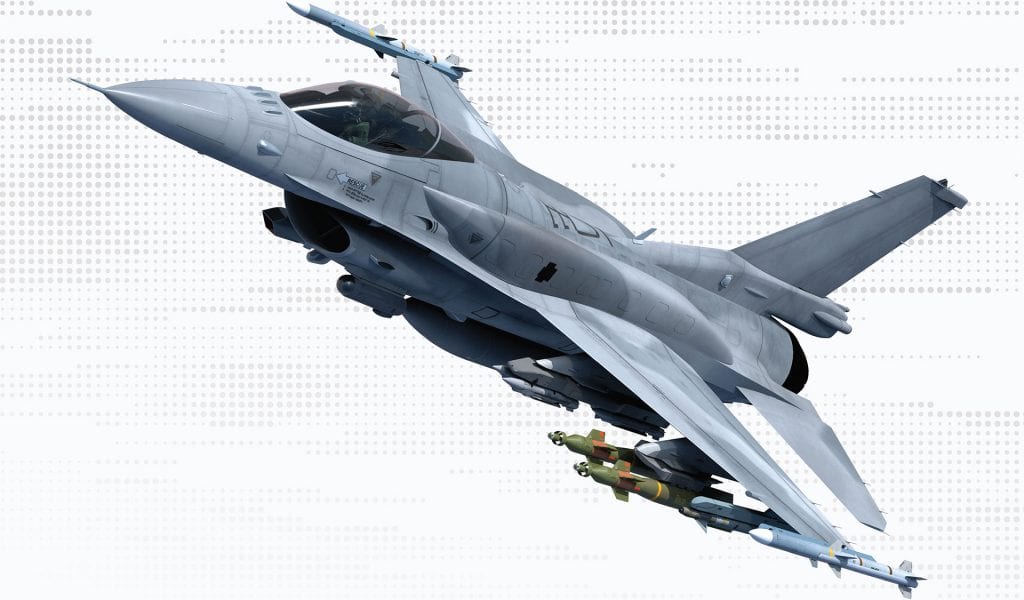
The Lockheed Martin F-16 Block 70/72 (Lockheed Martin)
The State Department has approved three sales totaling $2.6 billion in F-16 aircraft, Harpoon missiles, and Sidewinder missiles to the Philippines.
The Defense Security Cooperation Agency (DSCA) notified Congress of the possible sales on Thursday.
The largest sale is $2.43 billion for 10 F-16 Block 70/72 aircraft and two F-16D Block 70/72 aircraft along with associated equipment including 15 each F100-PW-229EEP or F110-GE-129D engines; Improved Programmable Display Generators; AN/APG-83 Advanced Electronically Scanned Array Scalable Agile Beam Radars; Modular Mission Computers 7000AH; and LN-260 Embedded GPS/INS with SAASM and PPS.
The sale also includes 24 Advanced Medium Range Air-to-Air Missiles AIM-120C-7/C-8 or equivalent; 48 LAU-129 missile launchers; three KMU-572 Laser Joint Direct Attack Munition tail kits; six Mk-82 500lb bombs; six Sniper Advanced Targeting Pods (ATP) or Litening ATP; 15 M61A1 Vulcan Anti-Aircraft 20mm guns and several other sensors, ammunition types and associated equipment and logistical support services.
uAvionix Micro-Transponder Certified by DoD
The Department of Defense (DoD) has certified uAvionix Corporation’s micro-transponder, RT-2087/ZPX-A, though the Air Traffic Control Radar Beacon System Identification Friend or Foe Program Office (AIMS PO), according to a June 23 release from the company.
The ZPX-A is suited for DoD classification Group 1 and 2 unmanned aircraft vehicles (UAV), according to the release. The transponder is certified with AIMS 17-1000 performance specification and will allow aircraft to fly in worldwide airspaces with civil transponder modes 3/A, C, S, and extended squitter (ES) ADS-B OUT.
Business & General Aviation
Jet It and JetClub to Become Launch Customers of Bye Aerospace Electric eFlyer 800

A computer-generated image of what Jet It’s first eFlyer 800 will look like. (Bye Aerospace)
Jet It and JetClub, two sister companies that operate unique new fractional ownership models in North America and Europe, have become the launch customers for Bye Aerospace’s all-electric twin-turboprop, the eFlyer 800.
First unveiled by the Colorado-based electric aircraft maker in April, the eFlyer 800 is being developed to feature a 500 nm range with an operational ceiling of 35,000 feet and 320-knot cruise speed. It will use two wing-mounted electric motors with dual redundant motor windings and quad-redundant battery packs.
Jet It, the North Carolina-based private aviation operator, and JetClub, their sister company serving Europe and Asia Pacific destinations, have signed a purchase agreement for a fleet of eFlyer 800 and four eFlyer 4 aircraft. Launched in 2018 by Glenn Gonzales, with expansions to Canada, Europe, and Asia through the partnership with JetClub, Jet It uses days rather than hours to sell shares of HondaJet Elite aircraft, allowing owners to only pay for the direct operating costs of the aircraft.
Aircraft Electronics Association Hosts Successful Avionics Convention in Texas
The Aircraft Electronics Association (AEA) hosted its 64th annual international convention and trade show last week in Dallas, Texas. According to a June 22 press release, nearly 1,500 avionics manufacturers, repair stations, installers and others converged on the at the Hilton Anatole in Dallas.
Space
Virgin Galactic Receives Approval From FAA for Full Commercial Launch License

Virgin Galactic’s VSS Unity 2 completed its third successful spaceflight on May 22, 2021. (Virgin Galactic)
Virgin Galactic received an update to their existing commercial space transportation operator license that will allow “the spaceline to fly customers to space,” according to a June 25 press release.
The adjustment to Virgin Galactic’s operator’s license, which the Company has held since 2016, marks the first time the FAA has licensed a spaceline to fly customers. It is further validation of the Company’s methodical testing program, which has met the verification and validation criteria required by the FAA.
“We’re incredibly pleased with the results of our most recent test flight, which achieved our stated flight test objectives. The flight performed flawlessly, and the results demonstrate the safety and elegance of our flight system,” Michael Colglazier, Chief Executive Officer of Virgin Galactic, said in the release. “Today’s approval by the FAA of our full commercial launch license, in conjunction with the success of our May 22 test flight, give us confidence as we proceed toward our first fully crewed test flight this summer.”
SpaceX to Launch Falcon 9 to Transport First SDA Experimental Satellites on June 25
On June 25, SpaceX is to launch a Falcon 9 rocket that will carry the Space Development Agency’s (SDA) first satellite missions–Mandrake II, the Laser Interconnect Networking Communications System (LINCS), and Prototype On-orbit Experimental Testbed (POET).
The SDA missions involve two Astro Orbital-built Mandrake II cube satellites with an SA Photonics payload, two General Atomics LINCS microsatellites to demonstrate space-to-air communications with an MQ-9 Reaper drone, and a Loft Orbital satellite carrying the POET payload, which is to demonstrate a low-latency “battle management capability” in space.
“The more processing that we can move into space, the better off we’re going to be,” an SDA official said on June 22. “POET is going to give us the first opportunity to actually do that… so we’re really looking forward to getting some data out of this.”
The Astro Digital satellites have been part of the Defense Advanced Research Projects Agency’s Blackjack program, started in 2018 to show how the military could benefit from low Earth orbit satellites and mesh satellite networks.
SpaceX’s Transporter 2 mission launch from Cape Canaveral Space Force Station, Fla. will carry dozens of rideshare satellites in what the company says is its second dedicated rideshare mission. SDA said that its missions will “gather data on optical communication terminal (OCT) performance and processing in low-Earth orbit (LEO), proving out a core capability required for SDA’s future development efforts.”
“Optical links between space, air, and ground assets offer significantly higher data rates and lower latency when compared to conventional radio frequency links, and demonstrate a pathway of getting real-time data to warfighter,” the agency said.
eVTOLs
Hyundai’s UAM Division Partners with ANRA
Hyundai Motor Group’s Urban Air Mobility Division and ANRA Technologies have formed a new partnership to develop an operating environment for the advanced air mobility (AAM) industry, according to a June 23 press release.
ANRA provides end-to-end drone operations and traffic management solutions for unmanned system operators, according to the release. ANRA will help Hyundai create a concept of operations (ConOps) for integrating AAM vehicles into the existing airspace.
“ANRA’s SmartSkies family of airspace management solutions have been proven worldwide and provide the critical support required for complex AAM operations at scale,” Amit Ganjoo, founder and CEO of ANRA Technologies, said in a statement. “We take a long-term view in everything we do as a company and are looking forward to integrating our advanced technologies with the Urban Air Mobility Division of Hyundai Motor Group’s AAM ecosystem and sharing our knowledge and experience to ensure the success of our partnership and help move our industry safely forward.”
According to the release, this partnership is the first in a series of ATM partnerships from Hyundai.
“We are pleased to partner with ANRA Technologies to begin building toward the safe and efficient integration of AAM into existing airspace,” Pamela Cohn, chief operating officer at Urban Air Mobility Division of Hyundai Motor Group, said in a statement. “As an emerging mobility solution, it is critical diverse parties work together to co-create the AAM ecosystem, including its necessary digital and physical infrastructure. ANRA brings a unique background of operational history in the drone services sector that will help define the operating environment for all AAM vehicles.”
Unmanned
Drone Emergency Response Exercise Conducted in New Jersey

The National Aviation Research and Technology Park (NARTP) conducted an exercise to test how unmanned and manned aircraft could work together during an emergency response scenario, the agency announced in a June 23 release.
American Aerospace Technologies (AATI) managed the drill which included manned aircraft like helicopters and unmanned aircraft such as drones, according to the release. The exercise included private companies and local, state, and federal agencies.
“Unmanned aircraft are a post-disaster force multiplier,” David Yoel, AATI CEO, said in a statement. “In the immediate aftermath of a disaster, UAS can provide critical information to first responders, accelerating response while increasing the safety and effectiveness of first responders. The goal of the 2021 South Jersey Emergency Response Exercise is to begin to develop an air operations coordination and approval process that enables UAS and conventional aircraft to operate concurrently – without adding risk to conventional aircraft operations, potentially accelerating response and recovery by days.”
ATC App for Drones Completes Successful Test with LVNL
The air traffic control (ATC) app made by Altitude Angel, GoDrone, completed a successful test where it gave ATC instructions to drone pilots through its interface with Air Traffic Control The Netherlands (LVNL), according to a June 25 press release.
“The success of this test is an important milestone for us,” Jurgen van Avermaete, general manager of procedures at LVNL, said in a statement. “By succeeding in this test, LVNL has delivered the next step towards safe air traffic control for manned and unmanned flights in the same airspace. In controlled airspace, this also means providing air traffic control to drone operators. This is a challenging task which we are addressing in close cooperation with our Dutch Drone Delta partners. We are not there yet, but today’s success shows that we are on the right track.”
The drone uses a UTM system via KPN’s 4G/5G network to transmit data, according to the release. This system was also tested during the exercise.
“The success of the trials are a clear demonstration of how, through collaboration, drones can successfully and safely be integrated in to controlled airspace, opening up a multitude of use cases for UAVs across a broad spectrum of industries,” Chris Forster, Altitude Angel Chief Operating Officer, said. “We’re very much looking forward to working with LVNL on the next exciting phase in the development of the GuardianUTM O/S powered GoDrone which in-turn will enable the Dutch drone economy.”
EASA Awards First Drone Certification to Volocopter

Volocopter’s VC200-2 drone was awarded the first design verification certificate from the European Union Aviation Safety Agency (EASA) to operate its aircraft for a specific usage, the agency announced in a June 24 press release.
Volocopter applied for the certificate on May 21 after EASA released guidelines for the design verification of drones on April 8, according to the release. The certificate allows Volocopter to operate its drone in a delimited low-risk area even if that area is located close to a higher risk area.
“The short time needed to issue the design verification report demonstrates that EASA is able to develop flexible tools that are adapted to the risk of the drone operation and to the needs of the market,” EASA Executive Director Patrick Ky said in a statement. “In the medium term this will be a winning concept for our stakeholders as it is efficient for all parties. We expect to process a large number of applications for design verification in the coming months.”
The post What’s Trending in Aerospace – June 27, 2021 appeared first on Aviation Today.
Check FastApn access for commercial satcoms at Fastapn
Flytlink – Avionics, Satcom’s and IFE Consultants






